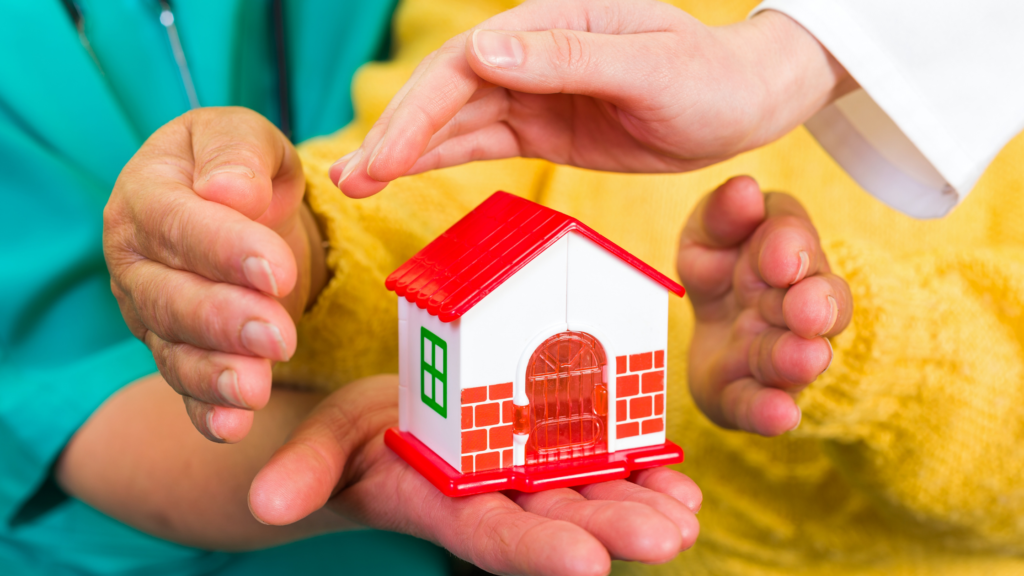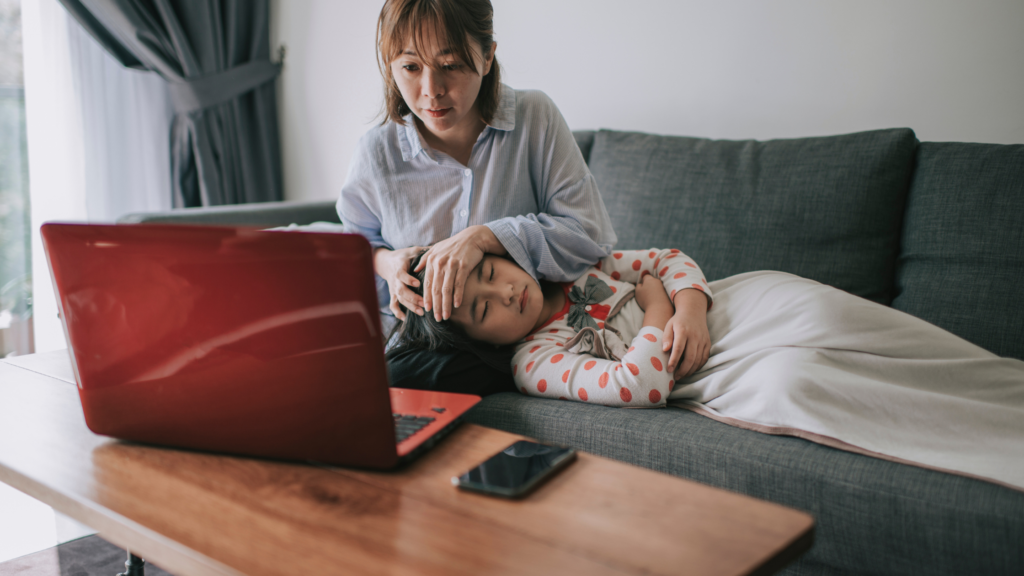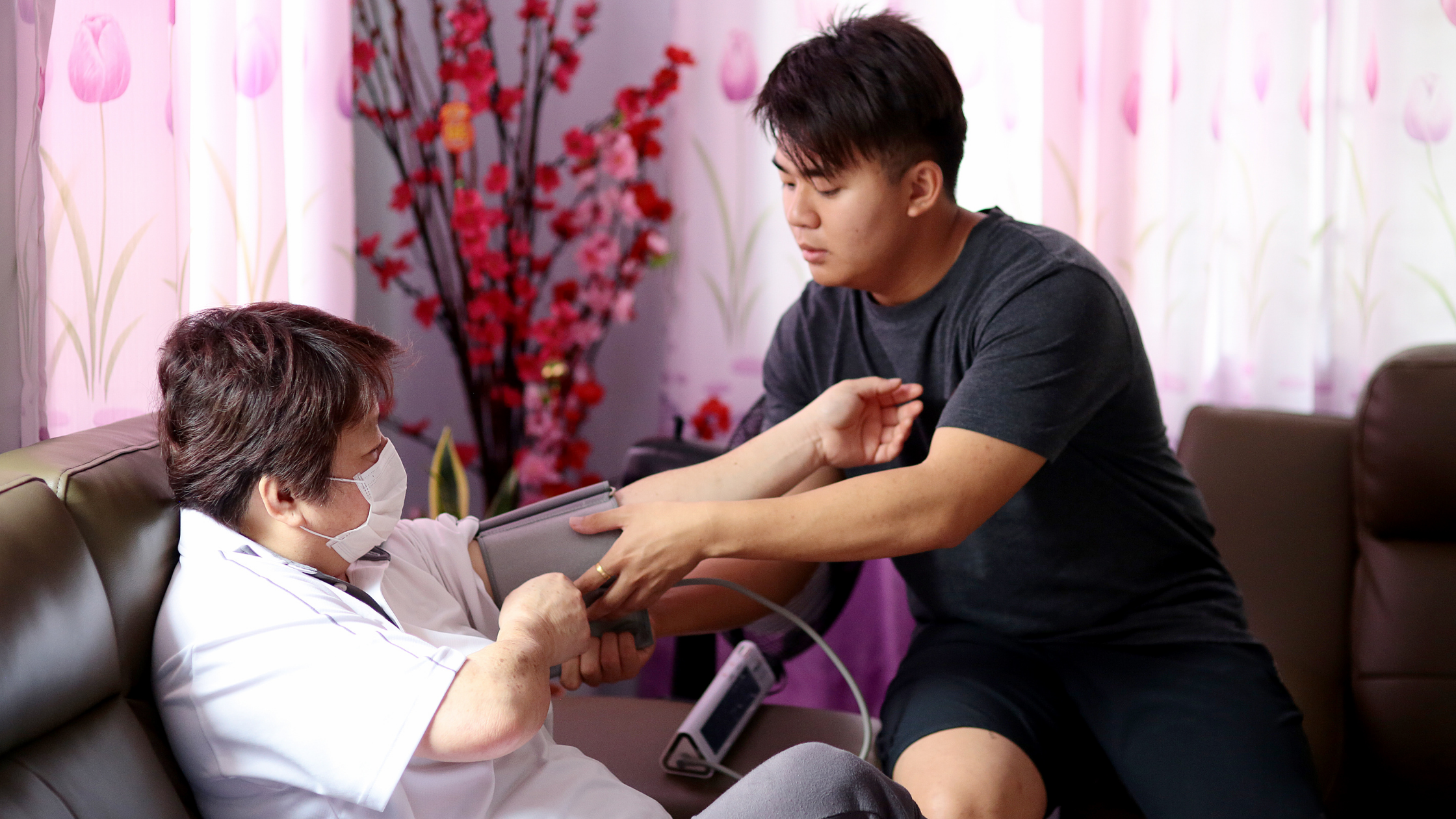When I was in nursing school xx years ago (not going to say the number, but my reunion has double digits in it), there was this sense that ‘real nursing’ happened in the hospital. Care at home was referred to as ‘public health nursing’ and, while important, was not given the same focus or level of prestige as hospital care. If that mentality has not changed yet, hospital-at-home programs will be the big disruptor.
Prompted by the pandemic, government support for high acuity services at home expanded rapidly over the last year. Many healthcare systems and providers are adapting quickly, with several big names announcing multi-million dollar investments in this area. With all of this change, it is important to consider what caregivers and nurses should do to be ready.

What is Hospital-At-Home?
Hospital-at-home is pretty much what it sounds like – an option for services that would normally have been provided at a hospital to be provided in a person’s home instead. These services can include things like physical therapy and rehabilitation, infusions, chronic condition treatment, and even chemotherapy.
I worked in home hospice care for six years and saw increasingly more services provided at home instead of keeping people in the hospital. There are many benefits for patients to be at home, including:
- Closer monitoring by friends and family
- More restful sleep since they control the lights, noise, and sleeping time
- Better food, so people are more likely to eat
- More activity – people tend to be sedentary in the hospital
- Joy from being at home with things that make them happy (like pets)

But aside from these observations, there is data to support hospital-at-home as a better option for patient outcomes and controlling healthcare costs. One study found hospital-at-home is 38% less costly than traditional hospital care. It also found only 7% of patients treated with hospital-at-home experienced readmission within 30 days, compared to 23% of people treated at the hospital.

The Recent Push Towards Care at Home
The Centers for Medicare and Medicaid Services (CMS) encouraged more hospitals to offer these services to help increase hospital capacity in the face of the pandemic. This is an expansion of their Hospital Without Walls initiative launched last year. CMS outlined a number of requirements for participation, which include components like:
- Screening protocols to assess medical and non-medical needs
- Provider (MD, NP) daily evaluation of each patient, either in person or remotely
- RN daily evaluation of each patient, either in person or remotely
- Two daily in-person visits by either RN or paramedic
- Ability to respond to declining patient within 30 minutes
- On-demand audio connection with team members who can connect patients to RN or MD
- Local safety committee to review patient safety data

The pandemic forced providers to try alternative care delivery settings, like home care and telehealth. Many providers are now embracing care at home and remote monitoring technology. A number of hospital systems are onboard – according to CMS, 92 hospitals in 24 states now offer acute hospital services in the home.

Big Names Get Behind Hospital-At-Home
The Mayo Clinic and Kaiser Permanente recently announced a joint $100 million investment in Medically Home Group – a technology-enabled services company that supports hospital-at-home programs.
Here is a video of how Medically Home’s program works:
Medically Home estimates 30% of patients currently treated in the hospital could be treated in a hospital-at-home model. The Mayo Clinic and Kaiser Permanente seem to agree. Both organizations started investing in this approach before making a financial investment in this company. The Mayo Clinic launched advanced care at home programs last year in Florida and Wisconsin. Their programs leverage paramedics and nurses under direction of a Mayo Clinic provider. Kaiser also launched hospital-at-home programs last year in California and Oregon.
This trend will grow over time with fewer services provided in hospitals and more services provided at home. The reason for this trend is the alignment of policy (CMS trying to free up hospital capacity), market demand (fewer people wanting to go to hospitals if they can get care at home), and technology.


Technology Makes Hospital-At-Home Possible
Without technologies like telehealth and remote patient monitoring, hospital-at-home would not be possible. These technologies enable services like continuous monitoring, rapid response, and virtual care team visits.
Medically Home offers technology-enabled services like:
- 24/7 medical command center staffed by clinicians
- Interdisciplinary care team in the community that makes home visits
- Integration with electronic health records
- Required protocols for high-acuity care at home
- Rapid response support
- Monitoring and safety technology in the home
They are one of several companies positioned to make this shift from hospital to home possible. Another company offering technology to support this is Biobeat – an Isreali company that is offering a home-based version of its technology.
Biobeat created a take-home kit that includes a wireless photoplethysmography vitals monitor. This is a technology that uses infrared light to detect changes in peripheral blood circulation. It allows for monitoring of things like blood oxygen saturation, cardiac output, blood pressure, and heart rate variability. It also allows providers to monitor conditions in real time with data transmitted to a cloud.
We will likely see more technology companies get into this space, including those who were not previously in healthcare like Amazon (check out this Thursday’s post for more on Amazon’s moves in healthcare).

How Caregivers Can Prepare for Hospital-At-Home
Anyone who has cared for a loved one at home knows it is not as simple as sending a person home with a monitor. There is a lot more to it as the burden of work shifts from hospital staff to friends and family.

Three things caregivers can do to prepare include:
Thing 1: Understand the goals of care
This goes beyond googling a medical condition to understand what is wrong. Understanding the goals of care means having a sense of what a good outcome means and what can be expected. Not everyone will to recover to the same level of function as prior to the hospital-at-home episode.
Caregivers need to understand what they can realistically expect. They also need to learn about warning signs and what to do if they see one.
Thing 2: Prepare a schedule and space
When I admitted patients into home hospice care, family life seemed to be put on hold as everyone adjusted to this new normal. But, usually within a week, life went on and people developed new daily routines.
It helps for caregivers to prepare a schedule that includes medications, home visits, therapy, and family events and activities. This both helps the caregiver to prepare for the medical needs of their loved one, but also gives them permission to live life beyond medical care.
It also helps to prepare space for needed equipment. Serving patients in New York City, I often had to help family members figure out how to make the most of limited space. Planning ahead for large pieces of equipment, stacks of supplies, and storing medications makes this transition easier.
Thing 3: Give everyone a job
Caregivers can have a hard time asking for help, even when family and friends ask, ‘What can I do?’ I always told caregivers to take them up on it and give everyone a job.
Does your cousin like animals? Great! She can walk the dog. Does your uncle love to cook? Awesome! Ask him to make some big batches of things that can be frozen and reheated. Is your sister good at budgeting? Fantastic! She can keep track of medical bills, insurance claims, and receipts.

How Nurses Can Prepare for Hospital-At-Home
I know there are nurses who secretly (or not so secretly) hope this whole thing is just a fad that will go away. But, I have news for them: this is only going to get bigger. Just like we are not going back to paper documentation, the days of everyone going to the hospital for everything are over.

Here are three things nurses can do to prepare for this new normal:
Thing 1: Get comfortable with technology
In this way of working, technology will be a nurse’s lifeline. It will be how we know a patient’s vital signs and significant events, as well as how we communicate with them. For nurses who like to learn and see the potential for technology to transform care, this will be a wonderful time to be in the profession. For nurses who are scared of technology, the road ahead will be bumpy.
Thing 2: Be ready to work as a team
When I made the move from the hospital to home care, it felt like going from working on an assembly line to being part of a construction crew. Instead of doing my piece of the work and handing it off, I actively worked with the physicians, social workers, therapists, and spiritual counselors. We reached out to each other, shared information, and even made visits together.
In the hospital-at-home model, nurses are part of an interdisciplinary care team. Nurses work with providers, therapists, paramedics, and other healthcare professionals to help the patient achieve the care goals. For that reason, it is important for nurses who are not used to that structure to adjust.
Thing 3: Get used to autonomy
One of the biggest adjustments I experienced as a home care nurse was the new level of autonomy. Unlike in the hospital where there are others who will take the next shift and essentially check my work, there was no one immediately following me into a patient’s home.
Working in someone’s home places the nurse as the most knowledgeable person in the room. This level of autonomy is helpful for building skill and critical thinking. Nurses need to be ready to take the lead.

Key Takeaways
Hospital-at-home is already disrupting traditional hospital services by moving acute care into the home setting. Prompted by the pandemic, CMS paved the way for an increase in health systems offering this service. Recently big names like the Mayo Clinic and Kaiser Permanente made headlines for their investment in a technology-enabled hospital-at-home services company. Both organizations expanded their hospital-at-home offerings last year during the pandemic to free up beds.
Caregivers and nurses need to be ready for this change. For caregivers, preparation involves understanding the goals of care, preparing schedules and space, and putting willing family and friends to work. For nurses, it means getting comfortable with technology, working as a team, and the greater level of autonomy.

Found this topic interesting? You may have the makings for a great Informatics Nurse! Check out From Bedside Nurse to Informatics Nurse: A How-To Guide in our online store, or by clicking here!







0 Comments